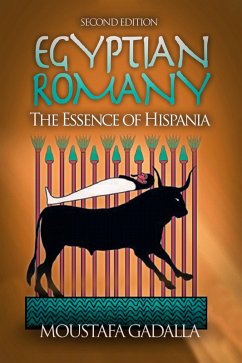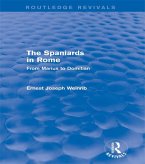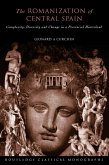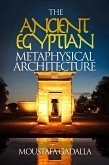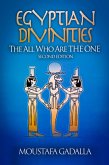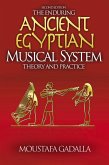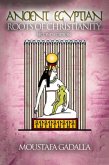This book reveals the Ancient Egyptian roots of the Romany (Gypsies) and how they brought about the civilization and orientalization of Hispania, over the past 6,000 years. The book also shows the intimate relationship between Egypt and Hispania archaeologically, historically, culturally, ethnologically, linguistically, etc., as a result of the immigration of the Egyptian Romany (Gypsies) to Iberia.
This Expanded Version of the book consists of 14 chapters:
Chapter one, The Romany (Gypsy) Essence of Hispania, sorts through the subject of the Gypsies and differentiates the Egyptian Romany from non-Egyptian nomadic groups. It highlights their Egyptian characteristics and their different related groups.
Chapter two, Our Heavenly Mother, shows how Ancient Egypt and Iberia share the intense love for the Virgin Mother (known in Ancient Egypt as Isis and in Christianity as Mary/Maria).
Chapter three, Out of Egypt, gives an overview of the major pitfalls in the common theories about the history of Iberia. It provides the accounts of early Egyptian immigration to other countries, and accounts of some of their early settlements in Asia and Europe.
Chapter four, The Egyptian-Hispanic Alloys
Chapter five, In the BeginningAlmeria, highlights the archaeological findings at the early settlements in several Iberian regionsbeginning at Almeria, and correlates these activities in Iberia with Ancient Egyptto show unique similarities and affinities between Ancient Egypt (in pre- and early dynastic times) and Iberia, in all aspects of religion, architecture, farming, metalworking, etc.
Chapter six, Masters of the Seas, shows the supremacy of the Ancient Egypt ships, their sizes, types, and functions.
Chapter seven, Merchants of the Seas, shows that Phoenicians were experienced seafarers and traders and nothing else. The Phoenicians did not have the number of people (or the talent) for the farming, art, industry, and building skills necessary to establish new settlements in Iberia or elsewhere.
Chapter eight, Canopus and Cádiz: A Tale of Two Harbors.
Chapter nine, The Assyrian Devastation and Aftershocks, correlates the rise of power of the Assyrians (and later the Persians), to the waves of mass migration from Ancient Egypt, which coincided with the increase in population and the number of settlements in Iberia.
Chapter ten, Romanticizing the Romans, addresses the lack of merit of Romans' influence in Iberiain all aspects of Iberian life, such as culture, government, religion, language, society, buildings, etc.
Chapter eleven, The Moors and the Egyptians, addresses the falsehoods of credits given to the Moors/Moslems/Arabs; and how all these aspects and activities were only found in Egypt. It also shows the huge number of Egyptian settlers.
Chapter twelve, The Origin of the Hispanic Languages/Dialects, defines the role of the Ancient Egypt language as the mother of all Semitic languages, as well as all other languages/dialects in the Mediterranean Basin and beyond.
Chapter thirteen, The Animated Religious Traditions, shows how the people of both Egypt and the Iberian Peninsula share the same concept of Animism, the power of saints, religious pilgrimages, festivals, etc.
Chapter fourteen, The Egyptian-Hispanic Musical Heritage, shows the intimacy between the Egyptians and Iberian heritage as it relates to music, poetry, song, and dance.
This Expanded Version of the book consists of 14 chapters:
Chapter one, The Romany (Gypsy) Essence of Hispania, sorts through the subject of the Gypsies and differentiates the Egyptian Romany from non-Egyptian nomadic groups. It highlights their Egyptian characteristics and their different related groups.
Chapter two, Our Heavenly Mother, shows how Ancient Egypt and Iberia share the intense love for the Virgin Mother (known in Ancient Egypt as Isis and in Christianity as Mary/Maria).
Chapter three, Out of Egypt, gives an overview of the major pitfalls in the common theories about the history of Iberia. It provides the accounts of early Egyptian immigration to other countries, and accounts of some of their early settlements in Asia and Europe.
Chapter four, The Egyptian-Hispanic Alloys
Chapter five, In the BeginningAlmeria, highlights the archaeological findings at the early settlements in several Iberian regionsbeginning at Almeria, and correlates these activities in Iberia with Ancient Egyptto show unique similarities and affinities between Ancient Egypt (in pre- and early dynastic times) and Iberia, in all aspects of religion, architecture, farming, metalworking, etc.
Chapter six, Masters of the Seas, shows the supremacy of the Ancient Egypt ships, their sizes, types, and functions.
Chapter seven, Merchants of the Seas, shows that Phoenicians were experienced seafarers and traders and nothing else. The Phoenicians did not have the number of people (or the talent) for the farming, art, industry, and building skills necessary to establish new settlements in Iberia or elsewhere.
Chapter eight, Canopus and Cádiz: A Tale of Two Harbors.
Chapter nine, The Assyrian Devastation and Aftershocks, correlates the rise of power of the Assyrians (and later the Persians), to the waves of mass migration from Ancient Egypt, which coincided with the increase in population and the number of settlements in Iberia.
Chapter ten, Romanticizing the Romans, addresses the lack of merit of Romans' influence in Iberiain all aspects of Iberian life, such as culture, government, religion, language, society, buildings, etc.
Chapter eleven, The Moors and the Egyptians, addresses the falsehoods of credits given to the Moors/Moslems/Arabs; and how all these aspects and activities were only found in Egypt. It also shows the huge number of Egyptian settlers.
Chapter twelve, The Origin of the Hispanic Languages/Dialects, defines the role of the Ancient Egypt language as the mother of all Semitic languages, as well as all other languages/dialects in the Mediterranean Basin and beyond.
Chapter thirteen, The Animated Religious Traditions, shows how the people of both Egypt and the Iberian Peninsula share the same concept of Animism, the power of saints, religious pilgrimages, festivals, etc.
Chapter fourteen, The Egyptian-Hispanic Musical Heritage, shows the intimacy between the Egyptians and Iberian heritage as it relates to music, poetry, song, and dance.
Dieser Download kann aus rechtlichen Gründen nur mit Rechnungsadresse in A, B, CY, CZ, D, DK, EW, E, FIN, F, GR, H, IRL, I, LT, L, LR, M, NL, PL, P, R, S, SLO, SK ausgeliefert werden.

